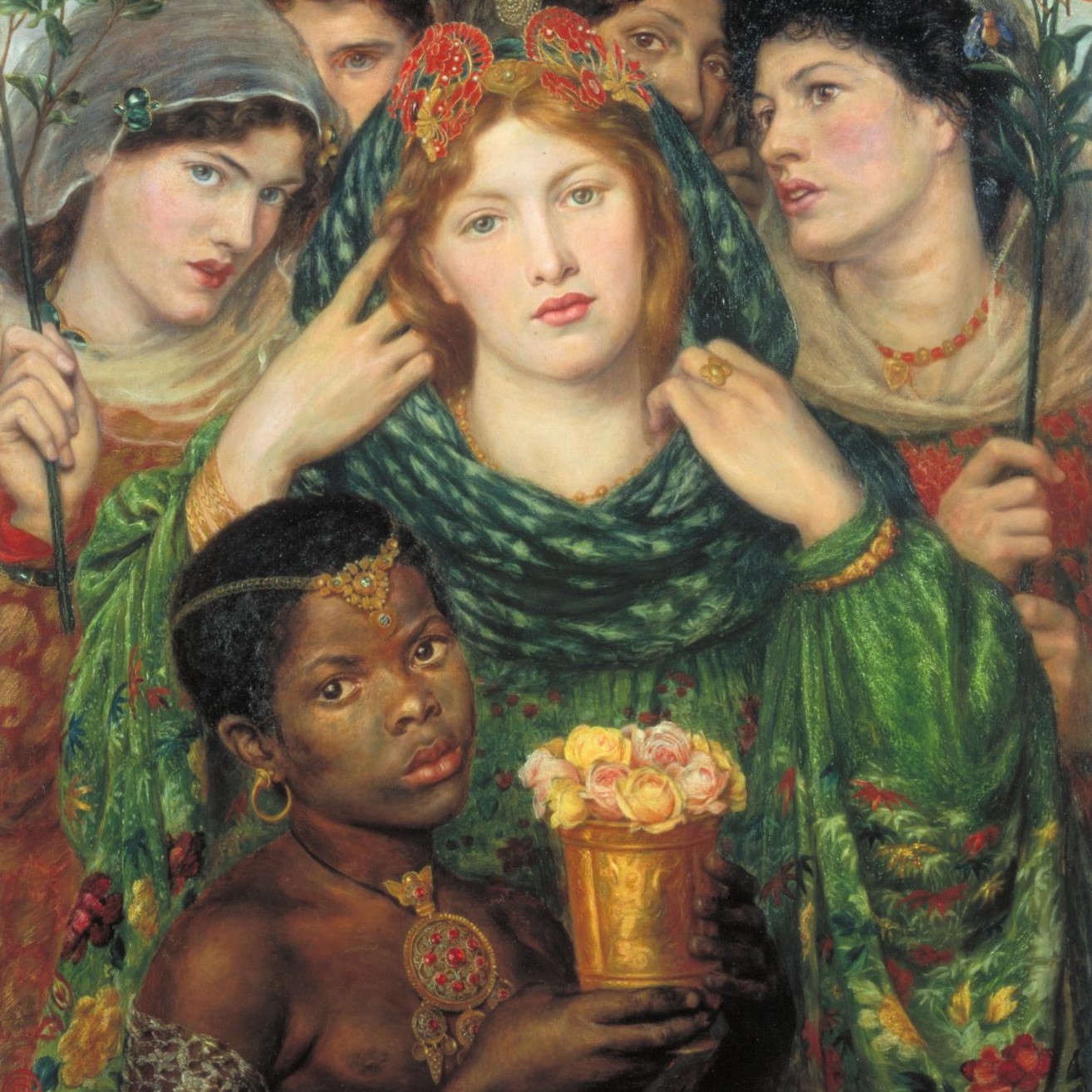در نخستین نمونههای باقی مانده در تاریخ هنر میتوان شاهد توجه به جواهرات بود. مجسمههای ونوس که ابعاد بسیار کوچکی داشتند و به بیش از سی هزار سال پیش بازمیگردند ، به احتمال زیاد کارکرد جواهر داشتهاند. سپس در بینالنهرین و مصر نیز اشیا باقی مانده حکایت از توجه به جواهرات در این تمدنها دارند. با این حال توجه به جواهرات هنری در دوره رومیان جایگاه ویژهای یافت. رومیان به سکهها و سنگهای حکاکی شده توجه ویژهای داشتند و از آنها در جواهراتشان بهره میبردند. این شیوه در قرون وسطی نیز ادامه یافت. در دوران رنسانس جواهر به نشانه اشرافیت بدل شد و مجموعه داران آثار هنری به گردآوری جواهراتی پرداختند که جنبه هنری و منحصر به فرد داشتند. تجارت جهانی در قرون هفدهم و هجدهم موجب شد که جواهرسازان با سنگها و مواد جدیدی آشنا شوند و آثار متفاوتی پدید آورند. با این حال نقطه اوج جواهرات هنری به انجمن هنرمندان پیشارافائلی در قرن نوزدهم بازمیگردد که به هنرهای دکوراتیو و دیزاین اشیا زندگی روزمره گرایش داشتند. در نقاشیهای آنها نیز شاهد بازنمایی جواهرات مختلف هستیم. پس از این تلاشها در انتهای قرن نوزدهم جواهر به عنوان اثر هنری پذیرفته شد. در این میان علاوه بر انجمن پیشارافائلی باید به نقش مکتب رمانتیک و جنبش هنرها و صنایع دستی نیز اشاره کرد. آنها تولید انبوه محصولات صنعتی را نفی میکردند و بر ویژگی منحصر به فرد بودن تاکید داشتند. پس از آن در قرن بیستم معماران و مجسمه سازان نیز نخست در اروپا و سپس در آمریکا به طراحی جواهرات هنری پرداختند
History of Artistic Jewelry
Certain interest in jewelry may be observed in the earliest specimens remained in the history of art. Most probably, mini-sized Venus sculptures, dated back to more than thirty thousand years, had been used as jewelry. Later on, the remained objects found in Mesopotamia and Egypt indicate interest in artistic jewelry in these ancient civilizations. However, the interest in artistic jewelry was of a special place during the Roman Empire Era. The Romans paid a special attention to coins and engraved stones and use them in their jewelry. This method continued during the Medieval ages. During Renaissance, jewelry became a sign of aristocracy and the artworks collectors started collecting jewelry with artistic and exclusive nature. The global trade during 17th and 18th centuries helped the jewelers to be introduced to new stones and materials to enable them create different works. However, the peak of artistic jewelry was the Pre-Raphaelite Brotherhood in 19th century, who were interested in decorative arts and daily life objects design. We also observe a variety of jewelry representation in their paintings. After all these efforts, jewelry was admitted as a work of art at the end of the 19th century. Furthermore, in addition to the Pre-Raphaelite Brotherhood, the role of romantic class and arts and handicrafts movement should also be noted. They used to negate industrial products mass production and emphasized on exclusivity. Later on, also in the 20th century the architects and sculptors commenced artistic jewelry design first in Europe and then in the USA.
I will introduce some of these works in the coming weeks.
